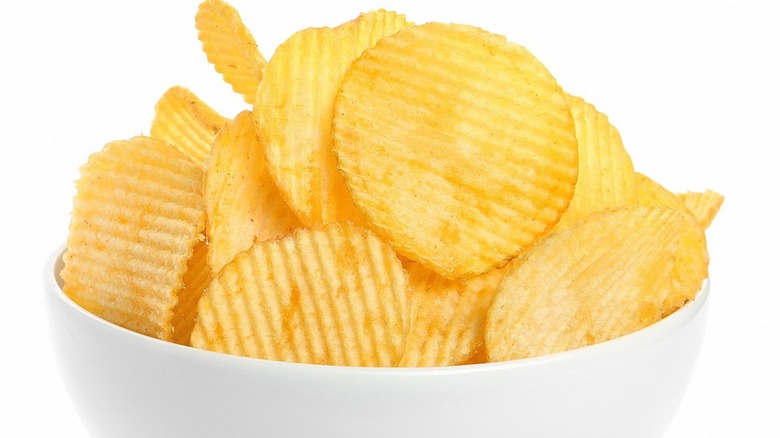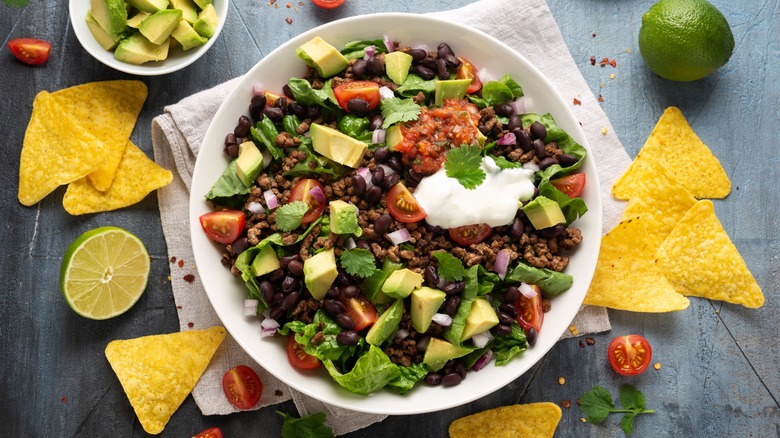Adding Chips Will Add A Whole New Level Of Crunch To Your Salad
Anyone can toss a few leaves in some dressing, throw in a few chopped veggies, add a chunk of protein, and call it a good salad. But a great salad is an entirely different story. A great salad is not only nutritionally complete, but it also incorporates different flavors and textures to make it something that you'd actually want to eat every day.
To make sure that your salad checks off all the boxes in the nutrition department, Eating Well recommends using a simple formula: half a cup of grains or starch, three ounces of lean protein, half a cup of produce, and half an ounce of cheese and garnish each. All the toppings should be built over three cups of greens and drizzled with two tablespoons of dressing.
Now that you have the basic structure for a filling and nutritious creation, it all comes down to mixing and matching the right salad ingredients in order to incorporate different flavors and textures. Chron, for example, compares the making of a salad to feng shui where the five flavors replace natural elements in the making of a great salad: sweet, sour, bitter, salty, and umami. Once you start prioritizing the flavor that each ingredient brings to the plate, you'll be on your way to making salads that are just as tasty as they are nutritious. Some of the foods that provide a pleasing salad texture are ones you may have never even considered putting in your bowl of greens — like chips.
Add different textures to your salad
The Kitchn makes a case for the importance of not just different flavors, but also different textures to make a boring salad truly enjoyable. It doesn't matter how many ingredients the salad has as long as you get a variety of sensations in your mouth with each bite — think juicy fruits paired with crunchy toppings, crisp leafy greens, and creamy dressings.
Food & Wine recommends looking at dressings, soft cheese, and veggies like avocado for a creamy texture. As for crunch, nuts, seeds, croutons, and veggies like cabbage and celery are a no-brainer. More importantly, however, the site says that it's important to distinguish a "crunchy" texture from a "crispy" one. While crunchy ingredients like nuts are thicker and have some tooth to them, crisp implies "a thinner texture that easily shatters." The perfect candidate for bringing a crispy texture to salads, the site says, is chips!
Plus, seasoned chips are also a good way to get another flavor onto the plate and to use as vehicles to scoop up leftover bites. The only thing to consider is going for chips that will hold up to the liquid dressing without getting soggy, which makes tortilla chips and pita chips excellent candidates. Now that you know the anatomy of a great salad and the importance of chips in it, how about giving these simple salad recipes a crispy spin?

